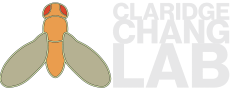How best to display data from two groups? Our new @biorxivpreprint argues that the best replacement for t-tests is the Estimation Plot. Unlike older statistical graphics, an estimation plot explicitly visualizes the comparison. https://t.co/EyhYnlsIYd pic.twitter.com/OkJ3B6K4MM
— Adam Claridge-Chang (@adamcchang) July 26, 2018
The new answer to a 77-year-old problem in data analysis, published today in @naturemethods. Instead of significance tests, use estimation graphics. Our software suite DABEST makes it easy for everyone to visualize effect sizes.https://t.co/UzwXJ7EUC5 pic.twitter.com/VtxyY0xaRM
— Adam Claridge-Chang (@adamcchang) June 19, 2019
I would really encourage people to check out this website. Easy to use and produces excellent, fully informed between-conditions plots. Far better than standard bar graphs that hide most of the information about your data. #stats https://t.co/9mqM0T9yWA
— Lewis Halsey (@lewis_halsey) August 7, 2019
#eNeuro @eNeuroEiC announces new author guidelines for statistical inference https://t.co/8YJSzaSGPY
— SfN Journals (@SfNJournals) August 2, 2019

 RSS Feed
RSS Feed